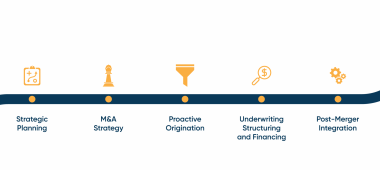This article was originally published in Forbes.
Fortune 500 companies receive real-time feedback regarding their market value thanks to the stock market. Unfortunately, private mid-market businesses don’t have that luxury, with many owners totally in the dark. Of course you often hear whispered “country club” multiples, but they often are exaggerated, reflect a strong selection bias (i.e. no one is bragging about the below-market valuation that they recently bagged), and have other issues discussed below.
Like any business owner you’re curious what your business is worth. Formal valuation exercises are often necessary for legal and tax planning purposes, but they follow specific rules required by case law, which is informed by academic research, and rarely reflect the true market value that a business will command if it were to sell. A recent study shows that approximately 60% of valuations are off by more than 15% in the actual sales process. In any other industry this performance would result in someone getting fired. Valuations are more art than science (can easily be manipulated) and results relative to market value or even between reputable firms can be significantly off (as in a 10x difference in value) for private businesses. So, if you rely on a valuation analysis for setting a sale price, your results are likely going to be wrong.
All valuations fundamentally utilize some form of subjective analogies to determine value– i.e. another asset with slightly lower quality characteristics recently sold for X therefore this is worth X+. For example, Kelly Blue Book, can estimate automobiles with a high degree of accuracy given the substantial quantity of available data regarding the same exact year and model. Without large sets of comparable transactions the valuation ends up being theoretical and highly subjective. Unfortunately, because private market transaction information is extremely limited (unlike real estate transactions where nearly everything is public), valuation exercises can be off – sometimes way off. One reason is that the sample size of truly relevant comparative transactions is most often one or even zero.
Here are some of the reasons of why your business might sell for a dramatically different value than what a comp would indicate:
- Business size. Likely the most important factor in variability since valuation multiples typically increase as a company increases in size. While some public company transactions must be disclosed, private transactions may not provide information on company size. Looking at public company disclosures is helpful but the valuation multiple for a $10M company might be 4-5x lower than its publicly traded counterparts.
- Recency of transactions. Whether you’re selling in a good or bad economic environment can have a large impact on your sales price. As you know, market sentiment can change rapidly in just a few months, and recent transactions may not reflect current conditions.
- Sub-industry variances. Another challenge is selecting the right comparative industry against since most businesses cross multiple verticals and there is seldom a company with exactly the same customer makeup, business models, etc.
- Business growth potential and profitability. Again, it can be hard to compare past and expected future performance against other companies and time periods.
- Risk measures, such as customer concentration, dependency on a single individual or ongoing litigation can also vary among businesses.
- Qualitative measures, such as cultures or employee turnover, can have a significant impact on how a prospective buyer views it.
- How consideration is paid. How much of the stated multiple is paid up-front in cash versus contingent (like an earnout), or paid in installments (and is there a market-rate interest rate being earned during this period)?
- Accounting methodologies. Businesses may track their numbers using different methods, making it difficult to compare EBITDA figures.
- Business assets. Are real estate properties or other non-core assets included in the transaction? If so, the comparable value is likely to be higher than for a business-only sale.
- Apples and Oranges. There can be differences as to when the EBITDA multiple is measured against (based upon last year’s, last twelve month’s, or next year’s forecasted earnings).
Ultimately, the only true way to know what your business is truly worth is by taking it to market and seeing what others are willing to pay for it after performing a full due diligence. Before engaging any investment banker they should provide you with a (complimentary) fact-based perspective of what they believe the business is worth. While this guidance is directional and can often be significantly off, reviewing the process, assumptions, and selected comps reveals alot about the advisor’s sophistication and knowledge about your specific sub-industry. And remember, your ultimate decision of who to represent you should not be driven by who proposes the highest value as talk is cheap and its virtually impossible to switch advisors without owing two sets of fees during the tail period (see my prior article, Don’t Get Bamboozled by Your Investment Banker).














